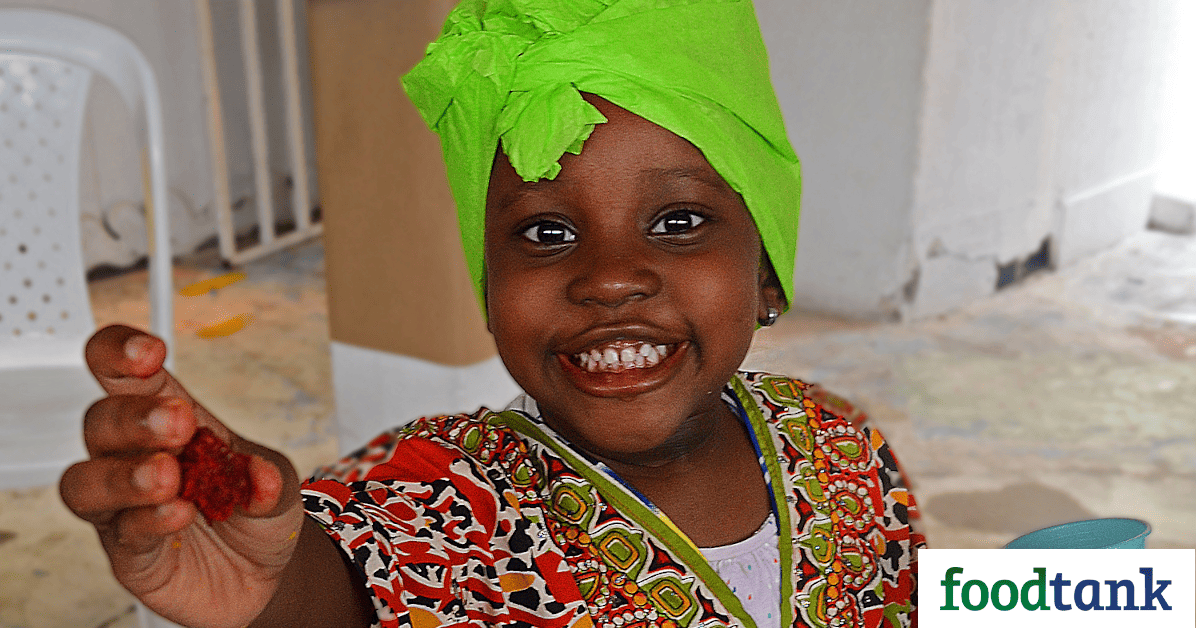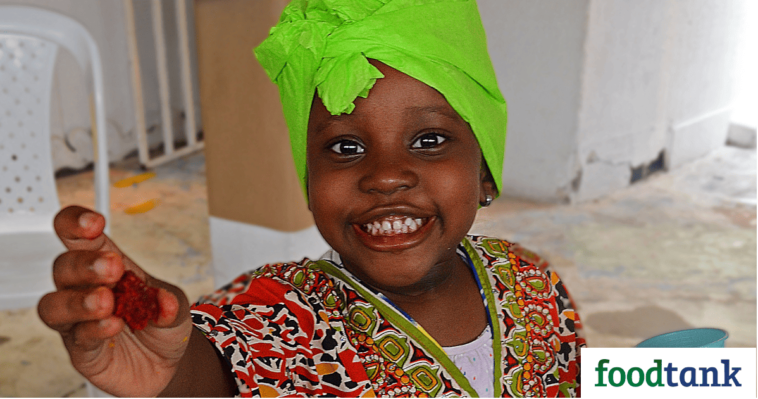School-Based Food Bank Programs Most Effective, Report Says – Food Tank

A new report from the Global FoodBanking Network (GFN) finds that school-based feeding programs can effectively feed school-age children, even during COVID-19.
Forty-one percent of children under the age of 15, or 605 million people, worldwide are at risk of hunger, according to the report. This can have negative impacts on both physical and cognitive development, lead to behavioral issues, and impair academic performance.
GFN’s food banks work to address child hunger by uniting and supporting food banks in more than 40 countries. In 2019, GFN sought to learn more about programs addressing child hunger. Between September and December of that year, the Network surveyed food banks and national networks in 30 countries to understand feeding programs that meet children’s needs.
The “Healthy Nations Start with Healthy Children” report shows that “one of the most effective ways to combat food insecurity among children is by establishing school-based feeding programs,” Monica Dykas, GFN’s Director of Child Hunger Programs, tells Food Tank.
According to Dykas, there are many benefits to school-based programs. “Logistically, it is much easier to deliver meals to children in food insecure households while they are in school,” Dykas tells Food Tank. “When scaled, the potential to quickly and efficiently reach vulnerable children is huge.”
Through the help of these programs, children can concentrate better and increase their performance in school, Dykas says. She adds that meal programs are also an incentive for families to keep their children in school. And in many impoverished communities, girls are more likely to stay in school longer where feeding programs are available.
This report offers readers case studies of the GFN food banks to showcase the diverse and innovative models addressing child hunger. These examples focus on food banks from different regions of the world with varying levels of economic development.
Alimento Para Todos (APT), a program in Mexico City, for example, developed their Back Pack Program. This initiative fills children’s backpacks with healthy foods to send home to bridge the meal gap on weekends. During COVID-19, the program has worked with community leaders and mothers to distribute packs.
In South Africa, FoodForward South Africa (FFSA) provides breakfast for thousands of children each school morning. In 2019, the program served 30,035 students each day and reported that school meals promoted school enrollment, punctuality, and attendance.
And in Western Australia, Foodbank Western Australia (FBWA) developed GFN’s first School Breakfast Program. FBWA serves more than 69,000 breakfasts each week with 56 percent of the schools located in hard-to-reach rural areas. The program was found to reduce disruptive behavior, increase student mood, and increase school attendance and punctuality.
Although GFN’s study began before the onset of the COVID-19 pandemic, the Network pivoted to understand how food bank programs are working to feed communities during the crisis. According to the U.N. Food and Agriculture Organization, the pandemic added between 83 and 132 million people to the total number of undernourished in the world in 2020.
“One hundred percent of food banks in the GFN Network have witnessed an increased demand for food since COVID-19 was declared a pandemic,” Dykas tells Food Tank.
The report finds that school-based feeding programs are also finding different ways to adapt during the pandemic. Working around school closures, some programs are providing take-home rations, home delivery of meal kits, and distribution sites for families to pick up food. For example, Banco de Alimentos Diakonía, a food bank in Ecuador, is using community kitchens and home delivery to provide hot meals to children during COVID-19.
For food banks to continue to feed communities, they need assistance in sourcing and purchasing more food. In the wake of COVID-19, they need help transporting food to distribution locations and families in need, according to Dykas.
“Both governments and the private sector must make critical investments in school feeding programs as a means to promote society’s health, education, and economic development,” Dykas tells Food Tank. “With millions of food insecure families turning to food banks for their next meal, food banks must have the support they need during this critical time.”
Photo courtesy of the Global FoodBanking Network
Published at Sat, 28 Nov 2020 08:00:31 +0000





Comments
Loading…